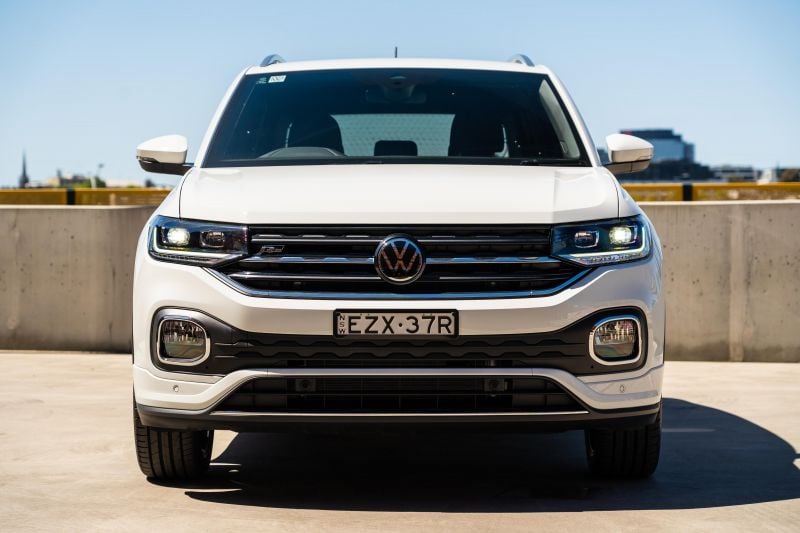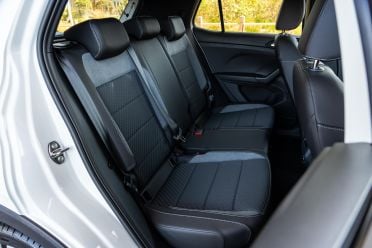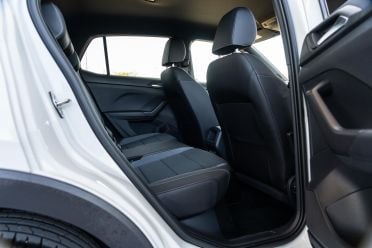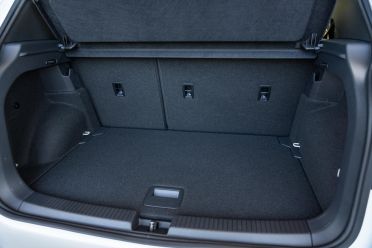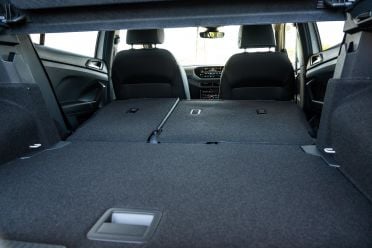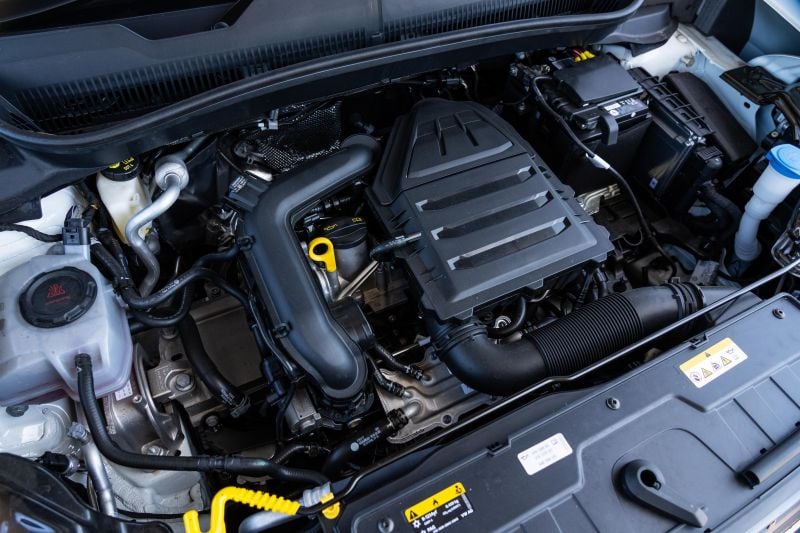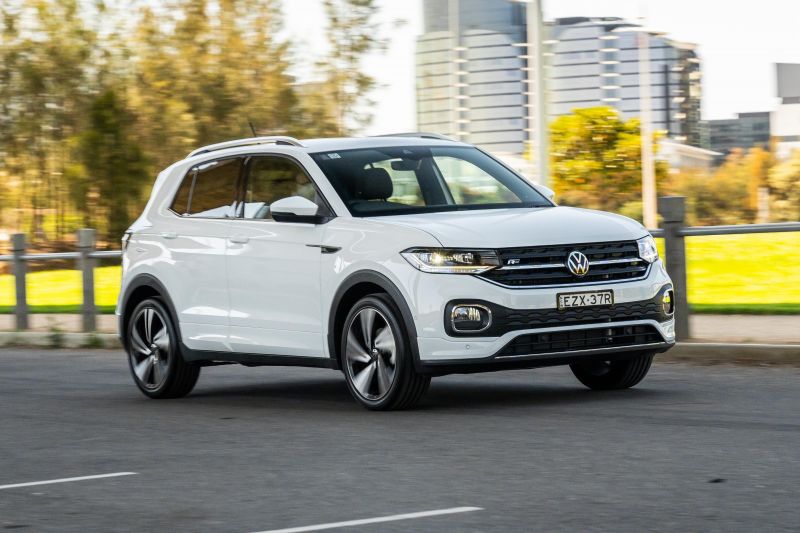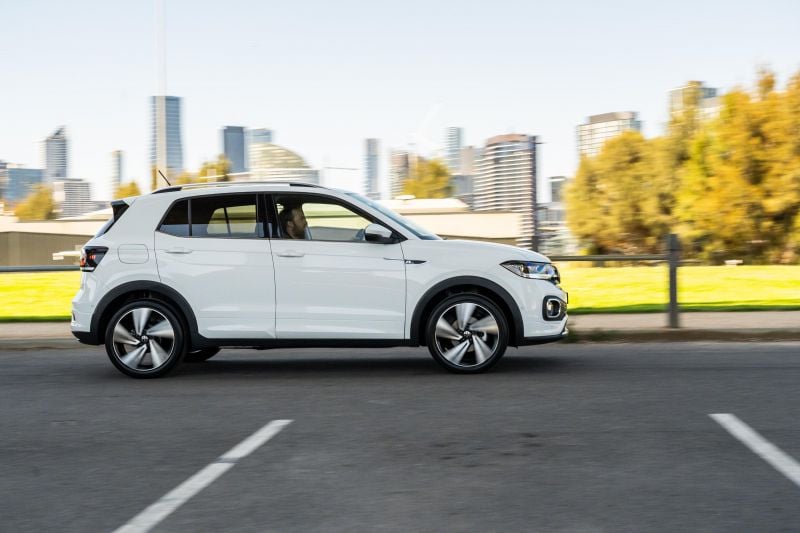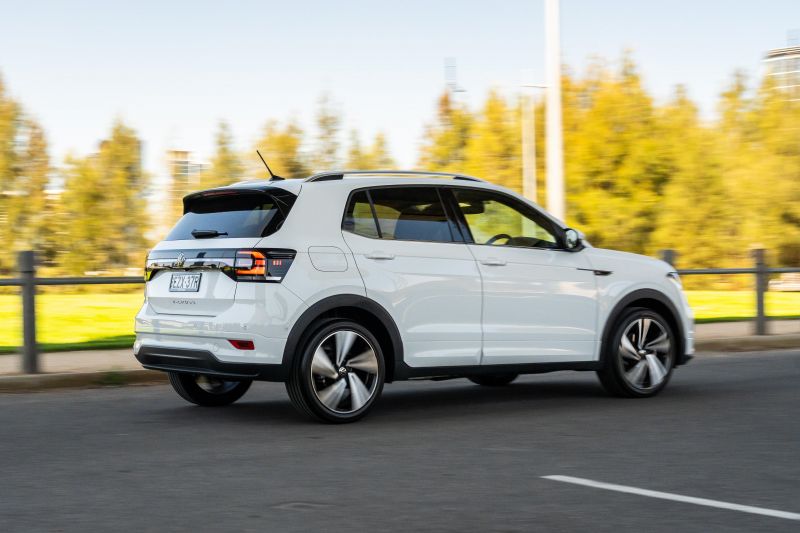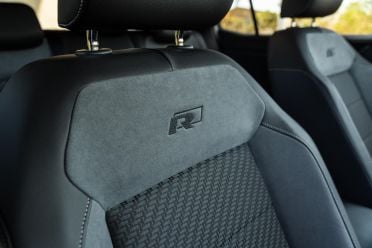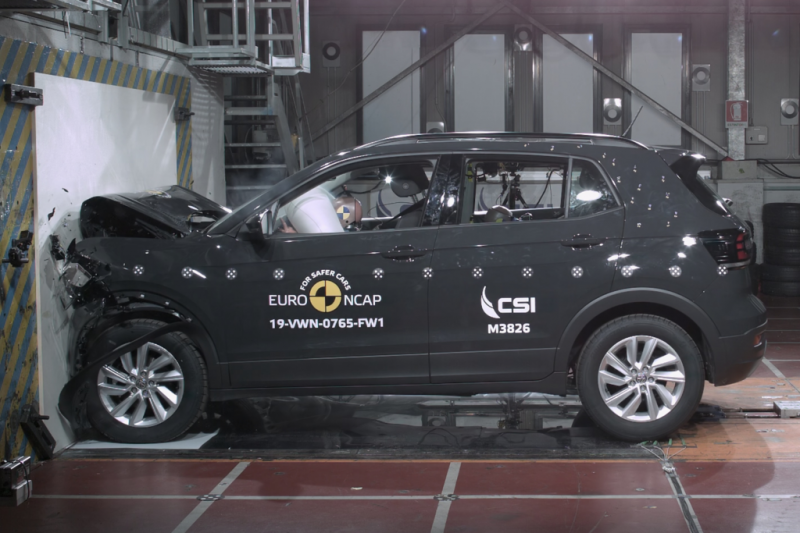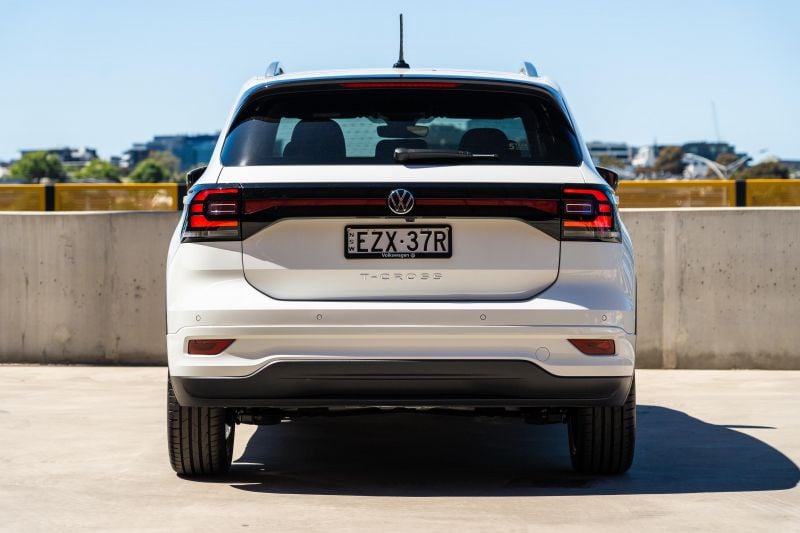The Volkswagen T-Cross, like many compact SUVs, is a crossover-fied version of a city hatchback.
Volkswagen’s smallest crossover effectively takes the popular Polo hatch, jacks it up and beefs up the guards and bumpers for a tougher look. Otherwise, it’s much the same under the skin as its low-riding sibling.
That’s what’s in vogue these days. Customers around the world want the higher ride height and feeling of security that you get from a traditional SUV, combined with the city-friendly proportions of a small hatch.
And, the T-Cross delivers on all of those fronts. Even better, it does it all with a level of maturity and refinement that we’ve come to expect from even the entry-level products in the German brand’s sprawling range.
Earlier this year the facelifted T-Cross was revealed to the world, bringing minor design changes but more substantial improvements in the cabin in the areas of tech and cabin material quality. However, it’s not getting to Australia until the second half of 2024.
In the meantime, you can get your hands on the existing model which is mechanically almost identical, and still packs a decent wad of kit and technologies relative to its segment. Is it still worth a look?
How does the Volkswagen T-Cross fare vs its competitors?
View a detailed breakdown of the Volkswagen T-Cross against similarly sized vehicles.

Volkswagen
T-Cross
How much does the Volkswagen T-Cross cost?
Volkswagen T-Cross pricing:
- Volkswagen T-Cross 85TSI Life: $30,990
- Volkswagen T-Cross 85TSI Style: $33,490
Prices exclude on-road costs
To see how the T-Cross shapes up against its rivals, use our comparison tool.
What is the Volkswagen T-Cross like on the inside?
The T-Cross borrows quite substantially from the related Polo hatchback inside, though with a design that adds a bit of height – while also taking a step back somewhat in material quality.
The fundamentals are solid, including a leather-wrapped steering wheel and handbrake, clear digital displays, and a sense of solid build quality.
While the overall tactility of the switchgear is good, don’t expect an abundance of high-end materials like you might have previously from Volkswagen. Instead, VW has gone for a hard-wearing, utilitarian vibe here.
The dashboard and door tops are finished in hard, scratchy plastics that almost feel better suited to commercial vehicles, and the overall finish doesn’t feel high-end given the car you see here is about the same price as a Golf.
With the upcoming facelift, the upper parts of the dash and doors will get nicer soft-touch materials. Read more here.
Otherwise, the interior has the ingredients of a typical Volkswagen cabin. Great ergonomics, good storage, a wide range of adjustment in the steering wheel and driver’s seat, good outward visibility, and a nice, insulated ambience.
The 8.0-inch touchscreen infotainment system with optional satellite navigation offers high-resolution, easy-to-navigate menus and quick response times, as well as in-demand features like wireless Apple CarPlay and Android Auto as well as DAB+ digital radio – though wireless App-Connect is tied to the optional navigation unit.
It’s the same interface you’ll find in most Volkswagen products, so it’s an easy win. Likewise, the 10.25-inch Active Info Display is crisp, responsive, and customisable. The optional 300W Beats premium audio system is decent for the class, but perhaps not the standout experience you might expect.
At least the touch points are trimmed in high-quality materials, from the aforementioned leather trim on the steering wheel to the padded centre armrest and front door inserts – though the rears miss out on the latter. Thankfully, the T-Cross has gone without the finicky touch-capacitive steering wheels that have polarised opinion of late.
While the T-Cross doesn’t necessarily justify its premium over a Polo 85TSI Style, relative to its competitors it certainly makes a case for itself as one of the more premium offerings, particularly in the area of infotainment.
Move into the second row and the T-Cross has one of the more accommodating rear seats in the class, bolstered by a nifty sliding bench to maximise rear legroom or allow more cargo capacity.
At 6’1 I can sit behind my own driving position in relative comfort, something not necessarily achievable in my experience with rivals like the Ford Puma and Toyota Yaris Cross.
Four adults should be fine in a T-Cross, and it’s more than roomy enough for kids. ISOFIX points on the outboard pews, top-tether mounts across all three positions and a large rear glasshouse make it a friendlier place for little ones, too.
Behind that second row is a 385L boot with the rear seats in their rearmost position, expanding to 455L with them slid forward. Fold them down and you have 1281L, with the adjustable boot floor allowing for a mostly flat load area.
A space-saver spare wheel lives under the boot floor. It’s worth noting that vehicles with the Sound & Vision Package lose 80 litres of cargo capacity as the Beats audio system’s subwoofer removes the variable floor height.
What’s under the bonnet?
| Model | Volkswagen T-Cross 85TSI |
|---|---|
| Engine | 1.0-litre 3-cylinder turbo |
| Power | 85kW (5000-5500rpm) |
| Torque | 200Nm (2000-3500rpm) |
| Transmission | 7-speed DSG |
| Driven wheels | Front-wheel drive |
| Weight | 1289kg (tare) |
| Fuel economy (claim) | 5.4 litres per 100km |
| Fuel economy (observed) | 6.5 litres per 100km |
| Fuel tank size | 40 litres |
| Fuel requirement | 95 RON |
How does the Volkswagen T-Cross drive?
The T-Cross drives very much like a raised Polo.
I’ve spent plenty of time in the current Polo hatch, as my younger sister owns one and I’ve reviewed some myself. The T-Cross maintains the bulk of the Polo’s on-road characteristics, while offering a more commanding view of the road.
DSG transmissions can be a little temperamental in the city, especially with a small-capacity engine like the 1.0 TSI that doesn’t offer its torque peak until 2000rpm.
The T-Cross still exhibits a moment of hesitation between stop/start disengaging and the transmission linking up, but it’s something you get used to and learn to work with. At the end of the day, this is a small city-friendly car designed and engineered with smoothness and efficiency in mind, and largely drives as such.
The 1.0-litre engine pulls strongly once you’re in the torque band, and has a thrummy and characterful note that’s surprisingly refined.
It’s almost like a small diesel engine in terms of how it drives. Volkswagen used to offer a 1.6-litre diesel in older generations of the Polo, and the torquey, relaxed vibe of the 85kW petrol engine seems to hark back.
There’s plenty of torque for city environments, and once moving the seven-speed DSG snaps through ratios so quickly it’s basically imperceptible. Where some rivals with CVTs or torque converter autos can be a smidge unrefined, indecisive or underpowered, the T-Cross goes about its business largely with maturity and class.
I was very surprised with how well the R-Line-equipped test car rode on Melbourne’s pimply inner-city roads. With 18-inch alloys and lower profile 215/45 rubber, the T-Cross never crashed over bumps and offered compliance you’d expect from a larger vehicle.
That big-car feel is more evident on the freeway, with the T-Cross feeling confident, composed and refined at Australia’s legal limits. The lack of semi-autonomous Travel Assist system grates when it’s available on every other car in the range, though.
It means you feel confident behind the wheel at all speeds despite its diminutive proportions, but those downsizing from a much larger car don’t necessarily have to sacrifice open road refinement. Big props to Volkswagen here.
Even at 110km/h the 1.0-litre engine hums away quietly in the background, with the tacho showing around 2250rpm. With adaptive cruise control engaged, long stints become an effortless task which can’t always be said for vehicles in this class.
We’ve already noted the lack of Travel Assist, but the removal of blind-spot monitoring and rear cross-traffic alert for 2023 models is another mark against the T-Cross. Yes there’s good outward visibility, but these features are things you don’t realise you need them until you do.
Otherwise, the Lane Assist function isn’t overzealous like we’ve found with some rival systems, and standard parking sensors front and rear augment the standard revering camera.
What do you get?
T-Cross 85TSI Life highlights:
- 16-inch alloy wheels
- Auto headlights (halogen reflector-type)
- LED daytime running lights
- LED tail lights
- Front fog lights
- Multi-function display
- Leather steering wheel
- Paddle shifters
- Cruise control
- Front seats with height, lumbar adjust
- Front centre armrest
- Air conditioning
- 8.0-inch Composition Media touchscreen
- Apple CarPlay, Android Auto
- DAB+ digital radio
- Reversing camera
- Wireless phone charger
- 4 x USB-C ports
- Parking sensors front, rear
- Electrically folding side mirrors
- Auto dimming rear-view mirror
- Rain sensing wipers
T-Cross 85TSI Style adds:
- 17-inch alloy wheels
- LED headlights
- Light Assist
- Dual-zone climate control
- Adaptive cruise control
- Keyless Access
- Park Assist
- Comfort sport front seats
- LED interior ambient lighting
- Carpet mats front, rear
- Chrome roof rails
Options
Sound & Vision Package: $2200
- 10.25-inch Digital Cockpit
- 8.0-inch Discover Media navigation system
- Wireless App-Connect
- Wireless Apple CarPlay
- Wireless Android Auto
- Beats premium audio system
R-Line Package: $2600 (Style)
- 18-inch alloy wheels
- R-Line exterior styling
- R-Line interior styling
- Rear privacy glass
Is the Volkswagen T-Cross safe?
The Volkswagen T-Cross wears a five-star ANCAP safety rating based on Euro NCAP testing in 2019.
The T-Cross achieved 97 per cent for adult occupant protection, 85 per cent for child occupant protection, 81 per cent for vulnerable road users, and 80 per cent for safety assist.
Standard safety equipment includes:
- AEB with Pedestrian, Cyclist detection
- Driver fatigue detection
- Lane Assist
- Lane departure warning
- Manoeuvre braking front, rear
- Parking sensors front, rear
- Reversing camera
- Speed limiter
T-Cross 85TSI Style adds:
- Adaptive cruise control incl. stop/go
- Auto high-beam
Blind-spot monitoring and rear cross-traffic alert were removed from local-spec vehicles due to component shortages. The final run of T-Cross models heading into 2024 pre-facelift haven’t seen these features return.
While the new T-Cross will likely carry over its predecessor’s safety rating unless Volkswagen wants a redo, the facelift will bring even more assistance tech including the company’s excellent Travel Assist semi-autonomous highway mode and Matrix LED headlights.
Expect Side Assist (blind-spot) and rear cross-traffic alert to return with the updated range in the third quarter of 2024.
How much does the Volkswagen T-Cross cost to run?
The Volkswagen line-up in Australia is covered by a five-year, unlimited-kilometre warranty.
Scheduled maintenance is required every 12 months or 15,000 kilometres – whichever comes first.
You can pay as you go, or buy a Care Plan which covers your service costs for three or five years. The three-year plan in the T-Cross is priced at $1400 upfront, while the five-year package is $2450.
It’s also worth calling out the T-Cross’s real-world efficiency. We managed an indicated 6.5L/100km in mixed driving favouring daily commuting to and from work – it’s not quite Yaris Cross Hybrid good, but it’s about as efficient as any combustion-powered rival gets.
CarExpert’s Take on the Volkswagen T-Cross
From launch the T-Cross has been the classier choice in a budget-focused segment, though as the years have rolled on it has a lost a bit of its shine.
With other models in the Volkswagen line-up – including the Polo – getting extensive upgrades and more rivals coming to the party, the ageing T-Cross does the fundamentals well but is starting to feel a little dated.
Add to that some frustrating spec adjustments like the removal of select assistance systems, and the T-Cross remains a noteworthy option if not quite the benchmark it once was. Also, option it like our test car and it’s over $40,000 drive-away.
For similar money you can get into a larger T-Roc or a Golf Life, both offering even more refinement, more available features and tech, as well as better performance from their punchier drivetrains. I’d also wager there’s better badge cred.
Not to mention $40,000 can buy you plenty of metal in the light and small SUV segments with similar advantages to the aforementioned VW stablemates. It’d be worth shopping around or bargaining hard.
Click the images for the full gallery

